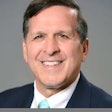
As we round the corner to the end of 2022, DrBicuspid.com asked our columnists to share their best practice management tips for the second half of the year, and the expert advice didn't disappoint. Check out the best tips to finish the year strong.
Curtis Marshall: Prepare now for the winter holidays
 Curtis Marshall.
Curtis Marshall.Although summer is still on our minds, the holiday season is quickly approaching. That means the end-of-year rush for dental appointments is on the horizon.
With students off on holiday break -- including college students who are back in town -- many people will request appointments during this time. Meanwhile, others will take some time off. On top of this, a lot of patients will want to use their remaining insurance benefits before they expire.
So how can you prepare for and use this unique time to your advantage? Here are three suggestions:
- Adjust your schedule. Consider adjusting your schedule to provide more availability for those students and others who would like to come in for a cleaning.
- Send benefit reminders. Remind patients of those benefits they need to use. Create a list of patients with remaining benefits, then send them a mass text message to fill any openings.
- Notify patients about your holiday hours. Inform your patients of your holiday hours by updating the hours on your website and announcing them on social media.
By preparing for the demand, you will be able to finish the rest of the year strong.
Also from Curtis Marshall: The 4 principles of practice success
Estela Vargas: Address your fees
 Estela Vargas.
Estela Vargas.When was the last time you raised your fees? Addressing your standard fee schedule and your preferred provider organization (PPO) network reimbursement reports to optimize fees is critical for the remainder of 2022 and into the future.
Are you keeping up with the inflationary effects on your supply chain, materials, and equipment costs? What about staffing costs?
Most dental practices spend little time analyzing what they charge compared to what they profit from production. It can be confusing to determine what it presently costs you to operate your practice as expenses keep rising.
Here are two steps to optimize your PPO fees:
- Analyze your PPO reimbursement. Before the end of the year, analyze which PPO networks you currently accept. It's critical to compare what it costs to operate your practice versus what they are paying you in real dollars. You can run some of these reports on most dental software systems.
- Weed out bad PPOs. While it may not always be fruitful, PPO negotiations are offered by many dental payers. PPO participation with better-paying plans will grow the practice, but PPOs with poor payment and customer service can weaken the practice. It's time to weed out the bad PPOs.
Also from Estela Vargas: How to code 3/4 crowns
Dr. Roger P. Levin: Tackle inflation by controlling overhead
 Dr. Roger P. Levin.
Dr. Roger P. Levin.Inflation is inevitable for most dental practices. As an example, according to Levin Group data, the average increase in staff compensation will be at least 10%.
Combining this factor with other increased expenses, ranging from supplies to increasing insurance costs, dental practices need to focus on overhead control more exquisitely than ever before.
Below are three steps the practice can take to improve overhead control:
- Refine major practice systems. Implement or refine all major practice systems, such as scheduling, hygiene productivity, case presentation, financial management, ordering and billing, insurance participation, etc. All the major business systems need to be up to date, and the team needs to be fully trained to create maximum practice efficiency. These actions will contribute heavily toward offsetting inflationary costs!
- Review every line item. Review every line item (everything being ordered by the practice) at least once every 90 days. Practices will pick up items they do not need, do not use, subscriptions that contributed at some point but no longer are being used by the practice, and other areas where expenses can be reduced. Keep in mind that a 1% reduction in overhead is the same as a 1% increase in profit or income.
- Ask yourself if you really need it. Every dental practice has numerous items that sit on a shelf and are no longer used or were never used. Some practices have a whirlpool room! Before increasing the quantities of items you order; adding new products, materials, or technologies; or increasing expenditures for the practice, simply ask if you need it and if you need it now. One strategy for overhead control is to put off purchases until you truly need them.
One additional consideration is your fees. Practices should be certain to increase their fees by 5% or so per year.
If you are concerned that raising fees will cause concern for patients, then work to improve customer service at the same time. People do not worry about fees when they have a great, positive experience.
Also from Dr. Roger P. Levin: It's time to redefine what it means to be a leader
Dr. Teresa Yang: Focus on your patient relationships
 Dr. Teresa Yang.
Dr. Teresa Yang.Recently, I accompanied my 99-year-old hard-of-hearing father to a new ophthalmologist. Everyone was masked in the office.
The eye doctor walked in, didn't introduce herself to either of us, and began talking to my dad in a hurried soft voice. He understood nothing and was unimpressed.
As an observer in the room, I thought, "What could this physician have done to improve the interaction and the potential patient-doctor relationship?"
Below are a few simple tips to do just that:
- Make eye contact. Making eye contact is especially important in the COVID-19 era of masks.
- Position yourself so you are level with the patient. If it's a child, get down to their level. Whatever you do, don't remain standing over the patient.
- Introduce yourself. Don't assume that just because the patient made an appointment, they know who you are. Besides, introducing yourself is simply good manners.
- Speak slowly and clearly. Perhaps it's someone hard of hearing like my father, whose comprehension premasking may have been helped with some lip reading. You may need to speak directly into a microphone or near the patient's ear. Or maybe the patient is a non-native English speaker and requires some translation.
- Don't act rushed. You might feel rushed, but don't act like you're in a hurry. It signals to the patient that he's unimportant.
- Listen to your patient. Stop speech-talking and truly listen to your patient and their needs.
All of this might seem obvious, but ask yourself: Do you act like this with every patient? The successful dentist understands that while you need clinical competence, dentistry is all about people skills and creating a trusting bond with your patients.
Also from Dr. Teresa Yang: I misdiagnosed my daughter with COVID hands
Dr. James V. Anderson: Improve your leadership skills
 Dr. James V. Anderson
Dr. James V. AndersonImproving your leadership skills can help you find success in the last quarter of 2022. The most important thing now is to keep building a strong, dedicated, collaborative team of people to guide your practice to future success.
Below are some ways to do just that:
- Take training courses. Building a great practice involves more than marketing. Marketing may attract patients to the office like bees to honey, but if we lack training or expertise in any vital area, we will lose what we gain. Take some online or in-person courses where you can gain feedback on your leadership style.
- Build a foundation of trust. Before we can attract and keep our patients satisfied, we must establish a solid foundation of trust and professionalism. Learning listening techniques and communication strategies will improve all of your relationships.
- Put the patient first. Build a practice culture that puts the patient first with time and understanding, not just dentistry. Establish core values that all of your staff share, like integrity, honesty, and kindness. Make safety and education/training a necessity for everyone.
- Create and refine your culture. Burnout can be avoided if the culture of your practice is created and maintained in a constructive manner. Take the time to proactively create and refine your culture as a team. People can overcomplicate the definition of culture. I define it as what is or is not acceptable when it comes to human behavior.
- Get input from your team. Have several team meetings where your agenda is focused on identifying behaviors that will fit in each list: what is acceptable and what is not acceptable. Creating an open dialogue among your team will start the process of defining how people work together in your practice. Having this written down will also be a great source to share with any potential candidates whom you may be looking to hire: It shows that your team is important to you and that you value their thoughts and opinions.
Also from Dr. James V. Anderson: Get ready for CDT codes to change again
Lynne Leggett: Take care of your team
 Lynne Leggett.
Lynne Leggett.One of the biggest challenges dental practices will continue to face for the rest of this year is finding or keeping great team members. My tip is to take care of your team.
There are two ways to accomplish this objective, including the following:
An additional benefit of allowing the team to create the culture you want in your practice is that it could be used as a competitive advantage over other practices that have not taken the time to do this. Once you have created a true team around the culture, it's something that team members will not find at another practice, and it will create a more open and trusting environment for your team.
Also from Lynne Leggett: Now is the time to prepare for the student rush
Dr. Marc B. Cooper: Invest in your managers
 Dr. Marc B. Cooper
Dr. Marc B. CooperMost pundits, advisers, and consultants consider practice management to be defined by systems, structures, standard operating procedures, policies, job descriptions, and accountabilities. But that is only one aspect of practice management.
The other critical aspect is the managers themselves, yet little time and money are invested in their education, training, and development to be effective managers.
Management's job is to produce results through others. To guide and motivate people to get their work done, managers need training and development in who they need to "be" to generate strong relationships in addition to an essential mastery of effective communication, a capacity to bring forth commitments in others, and a strong capacity to handle breakdowns and conflict.
Investing in management systems and structures is essential, but investing in your managers to develop their skills and mindset as managers is often overlooked.
Also from Dr. Marc B. Cooper: The question that determines dentistry's future
The comments and observations expressed herein do not necessarily reflect the opinions of DrBicuspid.com, nor should they be construed as an endorsement or admonishment of any particular idea, vendor, or organization.



















